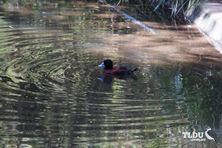
Shoppers Feedback:
Jan 17, 2017
Hello Ros,
I have now paid the invoice, but I would like to write to you just to say a big THANK YOU for getting me the Penguin!
The ChatterMate Penguin became a nice memory for me when I was in New Zealand, and I am so greatful to you for arranging so that I could have it! :-)
Thank you so much!!!!!!!!!!!
Regards,
Malin
Hi Ros,
Many thanks for your very kind email. I really appreciate your prompt reply!
I appreciate your advice regarding the decorations and customs. These are a gift for my daughter’s exchange student family so when she returns home on the weekend I will show her and see if she loves them as much as I do!
Thanks so very much again - I am truly grateful for your kind assistance.
Kind Regards
Bernadette
Ros,
Thanks again for the great customer service. It's a refreshing change!
Best regards,
Trevor
Hey Roz,
Thank you for your emails. Just loved my first order. The cute little Aussie bush critters are going to be used for an office Christmas decoration. My colleagues also liked them and talked about making an order to your site. I'll send you a photo when completed.
I'll be ordering more to send to my daughter's host family in America.
Fabulous service from you.
Kind regards,
Michelle
Thankyou. Order arrived today. One very happy grandson with his new beastly binoculars.
Regards,
Irene
- Home
- Wild Wonders
- Shop
- Aromas of Australia
- Australian Made
- Books
- Book Marks
- Christmas Decoration Sale
- Christmas Decorations
- Clocks
- Drink Holders
- Garden & Outdoor
- Gift Wrapping & Cards
- Home & Giftware
- Jewellery
- Keyrings
- New Products
- Pencils & Pen Holders
- Photo Frames
- Plush Toys
- Plush with Sound
- Sheepskin Rugs
- Stationery
- Stone Carvings
- Toys & Games
- Travel Goods
- Wedding
- Wild Figurines
- Wildlife Safety Products
- Wind Chimes
- Wine Charms
- View All Products
- Wildlife
- Australiana
- Explore
- Contact Us

Quick Facts
| Length: | 39 cm |
| Height: | - |
| Weight: | 850 grams |
| Colour: | - |
| Habitat: | Fully aquatic - rarely seen on land. Large deep freshwater dams and lakes |
| Food: | Aquatic insects and may eat seeds, buds, stems, leaves and fruit of a wide variety of plants |
| Predators: | - |
| Status: | Vulnerable in VIC. Rare in SA. Secure in WA, TAS & NSW. Not Present in NT& QLD |
The Blue-billed Duck is a compact diving duck with males having a large scooped bright, light blue bill. Males have a rich deep chestnut plumage overall except the dark head and upper neck and an orange-brown to white area at the centre of the belly. The tail is dark with stiff pointed feather tips and is usually held flat on the surface of the water except when in display. The female has a brown bill with darker plumage than the male and each feather is barred with narrow bands of light brown. The upper tail is black and the chin and throat are speckled black. It is also known as Blue Bill, Stiff Tail, Spinetail and Little Musk Duck.
The female Musk Duck is similar to the female Blue-billed Duck though much darker. The Blue-billed Duck floats higher than the Musk Duck.
The Blue-billed Duck is endemic to Australia, being found in the temperate wetlands of the south-east and south-west parts of the continent.
The Blue-billed Duck is almost wholly aquatic, and is seldom seen on land. Non-breeding flocks, often with several hundred individuals, congregate on large, deep open freshwater dams and lakes in autumn. The daylight hours are spent alone in small concealed bays within vegetation or communally in large exposed rafts far from the shore.
The Blue-billed Duck is seasonally nomadic. Young birds disperse each year from their natal (birth) swamps on inland New South Wales to non-breeding areas on the Murray River system and coastal lakes of Victoria and South Australia where they moult. Experienced breeders tend to be sedentary.
The Blue-billed Duck feeds on the surface of the water or by diving. It takes aquatic insects including chironomid fly larvae, caddis flies, dragonflies, flies and water beetle larvae. They may also eat the seeds, buds, stems, leaves and fruit of a wide variety of plants. Feeding occurs in permanent areas of clear fresh water. Late afternoon and early morning are common feeding times.
The tail of the Blue-billed Duck is usually held flat on the water, However, during courtship, or when alarmed, it is held fully erect.
Blue-billed Ducks breed in secluded, densely vegetated situations with the nest constructed in cumbungi beds or other vegetation generally over water. Nests are usually constructed from dead Typha leaves, and are sometimes thinly lined with down. Blue-billed Ducks are polygamous, and pair-bonds are short-term i.e. for the duration of copulation and laying of the eggs.
The Blue-billed Duck is threatened by the destruction or modification of habitat, particularly by drainage works, clearing, cropping or burning. It is listed as Vulnerable in New South Wales.
Last Updated: Thursday 9th January, 2014
BirdLife Australia - www.birdlife.org.au
BUSH e-TELEGRAPH
Signup for our monthly newsletter the "e-Telegraph"
Quick Links
Home | The Beginning | About The Land Down Under | Wild Wonders | Advertise on Wild Wonders | Christmas Decoration Sale | Christmas Tree Decorations | Drink Holders | Plush with Sound | Stone Carvings | Wildlife Wine Charms | Freebies | Australian Wildlife | Help Our Wildlife | Australiana | Photo of the Month | Explore The Land Down Under | Contact Us | Legal Notices

